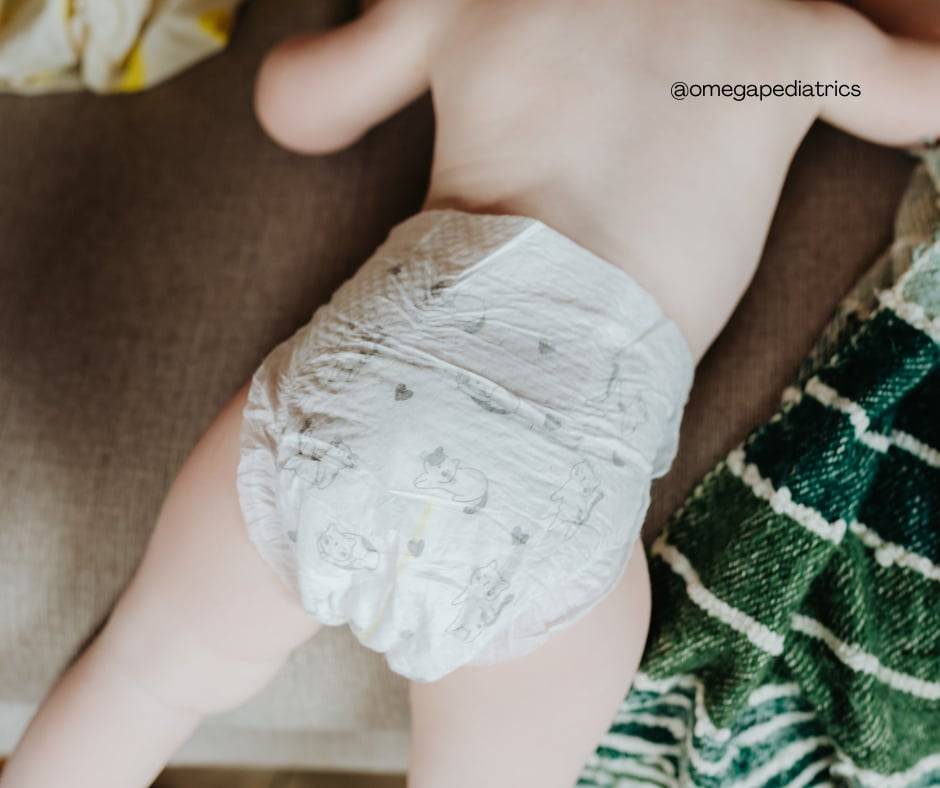Getting a newborn to sleep through the night is often one of the most significant challenges new parents face. Between the late-night feedings, diaper changes, and general restlessness, it seems like a restful night is out of reach. One tried-and-true method that helps soothe your baby and encourage better sleep is swaddling.
Swaddling has been a common practice for centuries, and for good reason. This guide will take you through how to swaddle newborn baby, covering its benefits, step-by-step instructions, common mistakes to avoid, and when to discontinue. This post aims to equip you with the knowledge to swaddle your baby safely and effectively.
The Science Behind Swaddling: Why It Works So Well
Before diving into the “how-to,” it’s important to understand the “why.” Why swaddle newborn baby to help in their sleep? The answer lies in reflexes, sensory experience, and sleep cycles.
Reflexes and the Moro Reflex
One of the primary reasons swaddling is so effective is because it controls the Moro reflex, commonly known as the startle reflex. This is an involuntary reflex in newborns causing them to suddenly jerk their arms or legs in response to a loud noise, a sudden movement, or even nothing at all.
The Moro reflex is a natural defense mechanism, although it disrupts your baby’s sleep. Keeping your baby’s arms snugly at their sides through swaddling prevents them from startling themselves awake.
Mimicking the Womb Environment
Another reason swaddling works so well is it mimics the secure and snug environment of the womb. Newborns have spent the last nine months in a warm, enclosed space, and the outside world can be overwhelming. Swaddling recreates that feeling of security, which is incredibly soothing for your baby.
This sense of comfort significantly reduces crying and fussiness, often due to overstimulation.
Impact on Sleep Cycles
Newborns have shorter sleep cycles than adults, typically lasting 50–60 minutes. During these cycles, they move through different stages of sleep, including REM (rapid eye movement) sleep, which is lighter and easily disturbed. Swaddling reduces your baby’s movement during REM sleep, making them sleep more soundly through each cycle.
Indeed, swaddle newborn baby is a game-changer for your baby and your sanity.
How to Swaddle Newborn Baby: The Step-by-Step Guide
Swaddling seems intimidating at first, especially for new parents. However, with practice, it becomes a comforting routine for you and your baby. Here’s a detailed, step-by-step guide to swaddle your newborn safely and effectively.
1. Choose the Right Swaddling Blanket
Not all blankets are created equal when it comes to swaddling. The best blankets for swaddling are lightweight, breathable, and have a slight stretch. Muslin blankets are a popular choice since they meet all the criteria. They’re large enough to wrap around your baby securely but light enough to prevent overheating.
2. Lay the Blanket Out in a Diamond Shape
Lay the blanket flat on a safe, clean surface like a bed or a changing table. Arrange the blanket in a diamond shape, with one corner pointing up. Fold the top corner about 6–8 inches, creating a straight edge. This fold will form a pocket for your baby’s neck and head, ensuring they’re comfortable and securely positioned.
3. Position Your Baby on the Blanket
Gently place your baby on their back, with their shoulders just below the fold of the blanket. Your baby’s head should be above the folded edge, and their body should be aligned with the center of the blanket. Your baby should be lying flat with their arms at their sides.
4. Start the First Wrap
Take the left corner of the blanket and bring it across your baby’s body, tucking it snugly under their right arm and around their back. This wrap should secure your baby’s left arm by their side, but be careful not to pull the blanket too tightly across their chest. Strike a balance between snugness and comfort.
5. Fold Up the Bottom
Next, take the bottom corner of the blanket and fold it up over your baby’s feet. Depending on the size of the blanket, you may need to tuck some excess fabric under your baby’s legs. The goal is to secure your baby’s legs without restricting their movement. Some freedom of movement in the hips is essential.
6. Complete the Swaddle with the Final Wrap
Finally, take the right corner of the blanket and bring it across your baby’s body, tucking it securely under their left side and back. At this point, both your baby’s arms are snugly wrapped inside the swaddle. Ensure the blanket is smooth with no loose ends that could get undone through the night.
7. Check for Comfort and Safety
After completing, check that your baby is comfortable and safe. The swaddle should be snug enough to prevent them from wriggling out, but not so tight that it restricts their breathing or movement. You should be able to slip two fingers between the blanket and your baby’s chest to ensure smooth breathing while still being secure.
Swaddle Newborn Baby: Tips for Safe Swaddling

Swaddling is a fantastic way to help your baby sleep better. Do it safely. Here are some critical tips to ensure your baby is safe and comfortable.
Monitor for Overheating: Babies are more susceptible to overheating than adults, and it’s a significant risk factor for sudden infant death syndrome (SIDS). To prevent this, use a lightweight, breathable blanket, and dress your baby appropriately for the room temperature. A good rule of thumb is to dress your baby in one more layer than you’re comfortable with.
Check your baby’s temperature at the back of their neck, they should feel warm but not hot or sweating.
Always Place Your Baby on Their Back: The safest position for your baby to sleep in is on their back, especially when swaddled. Sleeping on the back reduces the risk of SIDS and is the pediatrician-recommended sleep position. Never place a swaddled baby on their stomach or side, since these positions increase the risk of suffocation.
Use a Swaddle Sack for Added Safety: If you’re worried about your swaddling technique or find that your baby frequently breaks out of their swaddle, use a swaddle sack. These are wearable blankets designed for swaddling. They have Velcro or zipper closures, making a secure and safe swaddle, and allowing for healthy hip movement, reducing the risk of hip dysplasia.
Recognize When It’s Time to Stop Swaddling: Although swaddling is a great tool for newborns, it’s not to be used forever. Babies 3–4 months of age roll over, and swaddling should be discontinued. Once your baby rolls, they need their arms free to push up and move about to avoid suffocation. Transition out of swaddling when they show signs of rolling.
Common Swaddling Challenges: How to Overcome
Swaddling seems straightforward, but it’s not uncommon to encounter some challenges along the way. Here are some common issues and tips on how to overcome them:
Baby Keeps Breaking Out of the Swaddle: If your baby keeps breaking out, it indicates it’s too loose. A loose swaddle defeats the purpose by allowing your baby to move their arms freely, which wakes them up. To fix this, pull the blanket snugly across your baby’s chest and tuck the ends securely under their back. Try a swaddle sack for a more secure fit.
Swaddling Too Tight or Too Loose: Find the right balance between a snug and a loose swaddle. If the swaddle is too tight, it restricts your baby’s breathing and movement, which is dangerous. On the other hand, a too-loose swaddle comes undone and poses a suffocation risk. To ensure safety, follow the guidelines to fit two fingers between the swaddle and your baby’s chest.
Baby Seems Uncomfortable in the Swaddle: Some babies are uncomfortable in a swaddle if they’re used to having their arms free. If your baby is fussy or trying to wiggle out of the swaddle, get one of their arms out. This gives your baby more freedom while still providing the security of a swaddle. Another option is to experiment with other types of swaddles.
Baby Overheats Easily: Your baby tends to overheat, even when dressed lightly, consider adjusting your technique. Use a thinner blanket or swaddle your baby in just a diaper instead of a onesie. Also, ensure the room temperature is comfortable and not too warm.
Alternatives to Swaddling: When Swaddling Isn’t the Best Option
Not all babies enjoy being swaddled. For some, swaddling isn’t the best option due to specific health concerns or personal preferences. Here are some alternatives to swaddling that help your baby sleep soundly:

- Sleep Sacks: These are the popular alternatives, especially as your baby grows older. These wearable blankets
- provide warmth and security without a tight wrap. Sleep sacks allow your baby to move their arms and legs freely while keeping them cozy. They come in various sizes and materials, so find the perfect one for your baby’s needs.
- Baby Carriers: These are good alternatives for babies who love being held. Carriers provide the snugness of a swaddle while allowing you to keep your baby close. The gentle rocking motion while you move soothes your baby and encourages sleep. Baby carriers are useful for naps or when your baby is fussy.
- White Noise Machines: This device mimics the comforting sounds in the womb, such as your heartbeat or the whooshing of amniotic fluid. These machines create a calming environment, helping your baby sleep better without a swaddle. White noise machines are useful for babies easily startled by outside noises.
- Pacifiers: The sucking reflex is calming for many babies and helps them settle down for sleep. If your baby doesn’t like swaddling, a pacifier is a good alternative. Use a pacifier that’s age-appropriate for safety.
FAQs about Swaddling Newborn Baby
As with any aspect of newborn care, swaddling comes with its own set of questions. Here are some of the most common questions parents have about swaddling:
Can I Swaddle My Baby All Day?
Swaddling should be reserved for sleep times. During the day, let your baby move freely and explore their environment. This helps with motor development and allows stretching and strengthening of the muscles. Save swaddling for naps and nighttime sleep to maintain its effectiveness.
Is It Safe to Swaddle a Baby With Hip Dysplasia?
If your baby has been diagnosed with hip dysplasia, be mindful of their swaddling position. The International Hip Dysplasia Institute recommends swaddling with the legs in a flexed, abducted position, which means the hips are bent and the legs are spread apart.
This promotes healthy hip development and reduces the risk of worsening hip dysplasia. Swaddle sacks designed to be “hip-healthy” are a great option for babies with this condition.
What If My Baby Hates Being Swaddled?
Some babies don’t enjoy being swaddled, and that’s fine. If your baby fusses or cries when swaddled, try alternatives like sleep sacks or baby carriers. It’s also possible that your baby prefers a different swaddling technique, such as leaving one arm out. Experiment to see what works best for your baby’s unique preferences.
How Do I Know If My Baby Is Too Hot in the Swaddle?
Overheating is a significant concern when swaddling, so monitor your baby’s temperature. Symptoms are sweating, damp hair, flushed cheeks, or a rapid heartbeat. If you notice any of these symptoms, remove the swaddle and check the temperature.
Swaddle Newborn Baby for a Better Night’s Sleep
Swaddling is an excellent tool for helping newborns sleep more soundly and securely. You can make swaddling a safe and effective part of your baby’s sleep routine. Every baby is different, so be patient as you find the best method for you and your little one. Ensure your baby feels safe, secure, and ready for a peaceful night’s sleep.
Check out these informative articles on related topics in newborn care. Happy swaddling!






